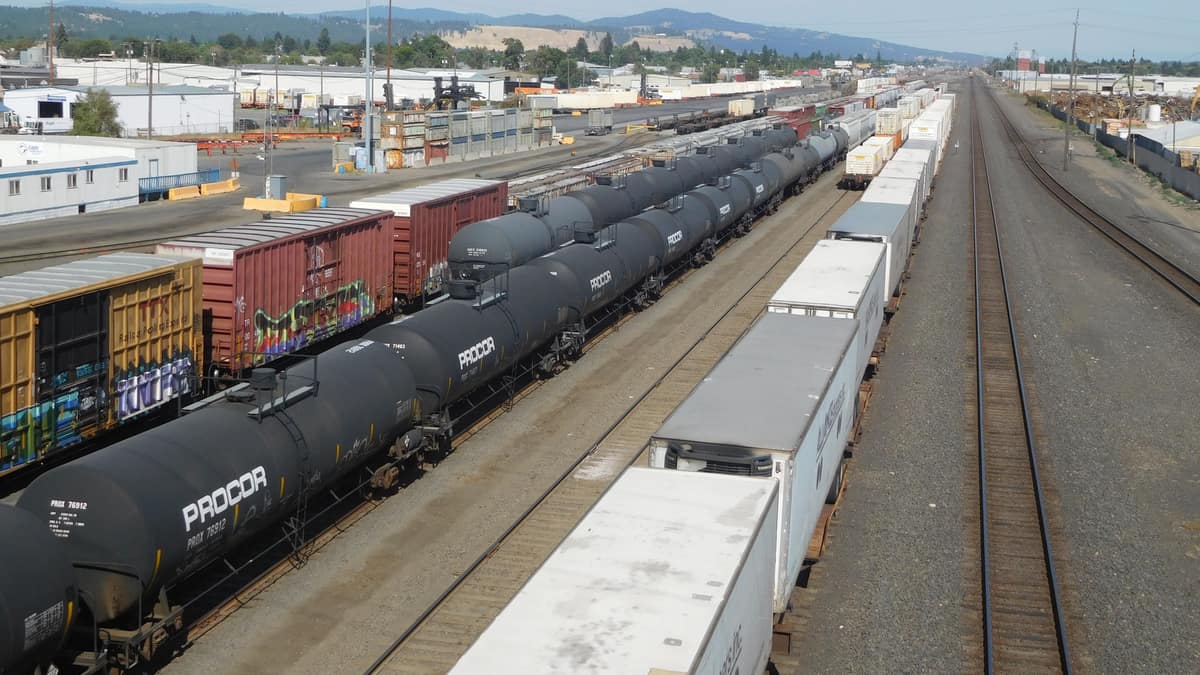U.S. weekly rail traffic fell 22.1% for the week ending May 9, according to the Association of American Railroads (AAR).
U.S. rail volumes totaled 412,549 carloads and intermodal units, falling 22.1% from the same week in 2019 as the COVID-19 pandemic continues to hit consumer demand and manufacturing output.
Of that total, U.S. carloads tumbled 28.4% to 185,144 carloads, while intermodal volumes slipped 16% to 227,405 intermodal containers and trailers.
“Last week was similar to recent weeks, in that the vast majority of rail traffic categories saw similar large year-over-year volume declines. As in the prior two weeks, autos, coal and steel saw especially big declines last week,” said AAR Senior Vice President John T. Gray, noting that last week’s total carloads were the second-lowest since AAR began its data collection in 1988.
Weekly North American rail volumes posted similar declines. Combined carload and intermodal traffic fell 20.5% to 576,473 carloads and intermodal units, with carloads slipping 27.2% to 266,647 and intermodal units falling 13.8% to 309,826.
A tough second quarter for intermodal
Blanked (cancelled) sailings could dampen port volumes in the second quarter as U.S. consumer demand remains depressed during the coronavirus pandemic, FreightWaves recently reported. That could make it tough for the railroads, who are also competing with a looser truck market.
On the West Coast, Port of Los Angeles Executive Director Gene Seroka recently said port volumes through April were down roughly 15.5% from the same period in 2019, a reflection of voided sailings. But sequentially, April volumes of 689,000 TEUs were higher than the 449,568 TEUs handled in March.
Through the end of the second quarter (June 30), “we see 28 void sailings, which is a tremendous number, yielding softness in the market through the months of May and June,” Seroka said in an American Shipper article. “Retail continues to delay, postpone and in some cases cancel orders. Fast fashion has struggled with a 50% drop in business overall. Auto and related parts are also down precipitously.”
Meanwhile, the Port of Savannah is bracing for 37 blanked sailings during May, representing about 20%-22% of its vessel calls, according to Georgia Ports Authority (GPA) Executive Director Griff Lynch. The port normally doesn’t have voided sailings in May. To date, June could see blank sailings representing about 15% of its vessel calls, Lynch said in another American Shipper article.
“We’re getting ready for two really tough months, then we’re hopeful we can kind of turn the corner,” American Shipper quoted Lynch as saying. GPA’s fiscal year ends in June. “We know it’s not going to be an immediate bounce back, but we’re hoping to see month-over-month improvements after we end the fiscal year. Maybe that’s more hopeful than factual, but we’ll have to see how it all plays out.”











